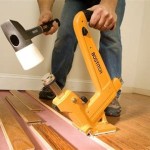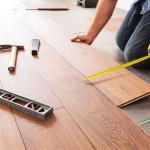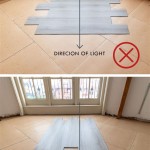Laying Laminate Flooring On An Uneven Surface
Laminate flooring is a popular choice for homeowners due to its durability, aesthetic appeal, and relatively easy installation process. However, achieving a flawless finish with laminate flooring hinges on the condition of the subfloor. An uneven subfloor presents a significant challenge, potentially leading to instability, unsightly gaps, and premature wear and tear of the laminate planks. This article details the necessary steps and considerations when laying laminate flooring on an uneven surface, ensuring a successful and long-lasting installation.
Understanding the impact of an uneven subfloor is crucial. Even seemingly minor variations in height can translate into noticeable problems once the laminate is installed. Weight distribution becomes inconsistent, causing some planks to bear more load than others. This can lead to clicking sounds when the floor is walked upon, indicating that the planks are not properly supported. Furthermore, areas of significant unevenness can cause the locking mechanisms of the laminate planks to weaken and eventually fail, resulting in separation and potential damage to the flooring material. For these reasons, proper subfloor preparation is paramount.
Assessing the Subfloor Unevenness
The first step in preparing for laminate flooring installation on an uneven surface is a thorough assessment of the subfloor. This involves identifying and quantifying the extent of the unevenness. Several tools and techniques can be employed for this purpose. A long, straight edge, such as a level or a metal ruler, is an essential tool. By placing the straight edge across various areas of the subfloor and using a feeler gauge or ruler to measure the gaps between the straight edge and the subfloor, the depth of the depressions can be determined. This process should be repeated throughout the room, paying particular attention to areas near walls and in high-traffic zones.
A more sophisticated method involves using a laser level. The laser level projects a horizontal line across the room, providing a visual reference for identifying high and low spots. By measuring the distance from the laser line to the subfloor at different points, a detailed map of the unevenness can be created. This map will guide the selection of appropriate leveling techniques. For larger projects or when significant unevenness is suspected, a professional floor inspector can be consulted. These professionals possess specialized equipment and expertise to accurately assess the subfloor condition and recommend the most effective course of action.
The acceptable degree of unevenness for laminate flooring installation is typically specified by the laminate manufacturer. This information is usually found in the installation instructions. Exceeding the manufacturer's tolerance can void the warranty and compromise the performance of the flooring. Generally, most manufacturers recommend that the subfloor be flat to within 3/16 inch over a 10-foot span. Deviations exceeding this threshold require corrective measures.
Leveling Compounds and Techniques
Once the subfloor unevenness has been assessed, the next step is to choose the appropriate leveling method. Several options are available, each suited to different types and degrees of unevenness. Self-leveling compound is a popular choice for correcting minor to moderate imperfections. This cement-based or gypsum-based mixture is poured onto the subfloor and allowed to flow, filling in low spots and creating a smooth, level surface. The compound typically hardens within a few hours, providing a stable base for the laminate flooring.
Before applying self-leveling compound, thorough preparation of the subfloor is essential. The surface must be clean, free of dust, debris, and loose particles. Cracks and holes should be patched using a suitable patching compound. A primer is often recommended to improve the adhesion of the self-leveling compound to the subfloor. The primer also helps to prevent the compound from drying too quickly, ensuring a uniform and strong bond. Following the manufacturer's instructions regarding mixing and application is crucial for achieving optimal results. Overwatering the compound can weaken its strength, while underwatering can make it difficult to spread evenly.
For more significant unevenness or for correcting specific areas, patching compounds can be used. These compounds are typically thicker than self-leveling compounds and are applied with a trowel to fill in depressions and level out high spots. Multiple applications may be necessary to achieve the desired level of flatness. Sanding the patched areas after they have dried can help to create a smooth transition between the patched areas and the surrounding subfloor. When using patching compounds, it is important to choose a product that is compatible with the subfloor material and the laminate flooring.
In some cases, particularly when dealing with wood subfloors, plywood shims can be used to correct unevenness. Shims are thin pieces of wood that are placed under the high spots of the subfloor to bring them up to the level of the surrounding areas. The shims are typically fastened to the subfloor with screws or nails. This method is best suited for correcting localized imperfections and is not recommended for addressing widespread unevenness. Careful placement and secure fastening of the shims are essential to prevent them from shifting or creating new problems.
Underlayment Considerations
Even after leveling the subfloor, the underlayment plays a vital role in ensuring a successful laminate flooring installation. The underlayment provides a cushion between the laminate planks and the subfloor, helping to absorb impact, reduce noise transmission, and provide additional insulation. When dealing with an uneven subfloor, choosing the right type and thickness of underlayment is particularly important. A thicker underlayment can help to bridge minor imperfections that may remain after leveling, providing a more stable and comfortable walking surface.
Several types of underlayment are available, each with its own set of properties. Foam underlayment is a common choice due to its affordability and ease of installation. Cork underlayment is a more environmentally friendly option that offers excellent sound absorption and thermal insulation. Rubber underlayment is known for its durability and resistance to moisture, making it a good choice for areas prone to dampness. Regardless of the type of underlayment chosen, it is essential to select a product that is specifically designed for use with laminate flooring. Some underlayments may not be compatible with certain types of laminate, leading to problems with the locking mechanisms or the overall performance of the flooring.
When installing the underlayment, it is important to follow the manufacturer's instructions carefully. Overlapping the seams or leaving gaps between the sheets can create unevenness and compromise the effectiveness of the underlayment. Taping the seams with a moisture-resistant tape can help to prevent moisture from penetrating between the underlayment and the subfloor. In areas with high humidity, a vapor barrier may be necessary to protect the laminate flooring from moisture damage. The vapor barrier is typically installed beneath the underlayment and helps to prevent moisture from rising up through the subfloor.
In summary, successfully laying laminate flooring on an uneven surface requires a meticulous approach that includes a thorough assessment of the subfloor, careful selection of leveling techniques, and the use of an appropriate underlayment. By addressing the unevenness of the subfloor before installing the laminate flooring, homeowners can ensure a stable, durable, and aesthetically pleasing result. Ignoring the issue of subfloor unevenness can lead to costly repairs and premature failure of the flooring. Therefore, investing the time and effort to properly prepare the subfloor is a crucial step in achieving a long-lasting and beautiful laminate floor.

How To Install Vinyl Plank Flooring As A Beginner Home Renovation

Can We Install Laminate Flooring On An Uneven Floor Singapore

Can You Install Laminate On An Uneven Floor Ready To Diy

Should We Be Concerned About Vinyl Plank Installed Over Uneven Floors

Floating Floors The Best Floor For Uneven Surfaces

What S The Best Flooring For Uneven Floor Surfaces Floortheory

Ask The Builder Blame Installation For Laminate Flooring S Problems

How To Lay Laminate Flooring On Uneven Concrete Floor Installing Laying Contractor

Laying New Wood Flooring Over Original Uneven Floorboards Le Arthur Wells

How To Lay Laminate Flooring Over An Uneven Floor Hunker
Related Posts








